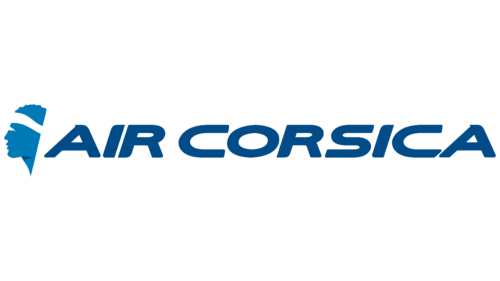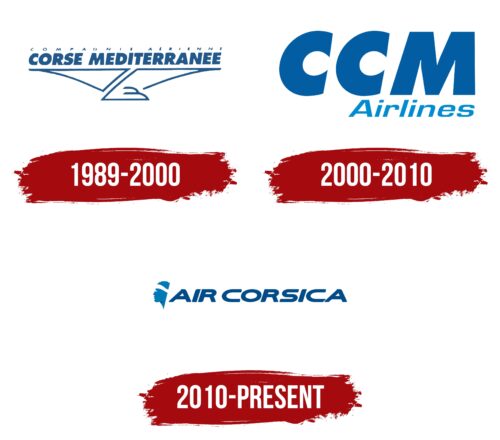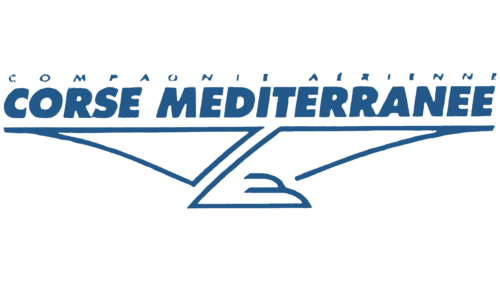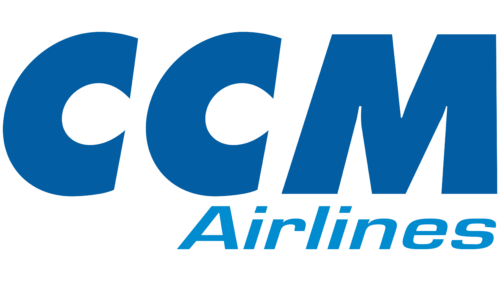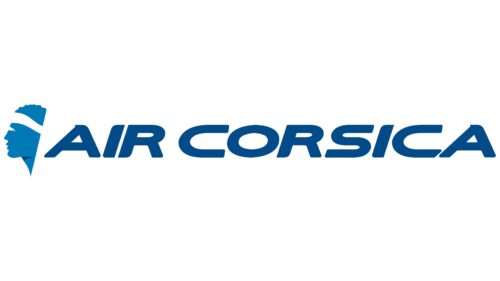The Air Corsica logo celebrates the region’s culture, making people feel comfortable, familiar, and proud. Its design combines artistic elements that showcase the airline’s connection to local communities. With an elegant and smooth style, the logo reflects Air Corsica’s promise to offer a pleasant and smooth flying experience.
Air Corsica: Brand overview
In the late 1980s, Air Corsica emerged from the union of Air Corse and Corse Air International, marking its beginning on the beautiful island of Corsica. Initially named Compagnie Corse Méditerranée (CCM), this new airline started with a few ATR 42 and Fokker 100 planes, focusing on connecting Corsica to mainland France. This step started a path toward growth and serving the community.
During the 1990s, CCM grew, adding flights to major French cities and branching into Italy, aiming to bring Corsica closer to its neighbors. This was more than just expanding routes; it was about strengthening ties beyond transportation.
The year 2000 was a turning point for CCM, as it underwent a major transformation after being acquired by the Dubreuil Group. In 2005, it rebranded to Air Corsica, adopting new colors and symbols that reflected its Corsican heritage. This period also saw the fleet updated with Airbus A320 and ATR 72 aircraft, highlighting Air Corsica’s dedication to providing high-quality and efficient service.
The next ten years saw Air Corsica expanding further, launching new routes across France and Europe and forming key partnerships, including a significant codeshare agreement with Air France in 2012. By 2018, Air Corsica had served a record 1.9 million passengers, proving its essential role in Corsican aviation.
Now, Air Corsica operates over 20,000 flights a year, connecting Corsica with many destinations. With its modern fleet, the airline is committed to growth and aims to add more routes, always focusing on being a reliable link for Corsica.
Air Corsica’s journey from a small regional carrier to a key part of Corsica’s transportation network shows its growth, commitment to its roots and resilience. By understanding local needs, modernizing its fleet, and forming strategic partnerships, Air Corsica has risen above the regional airline status, representing Corsica’s spirit in the skies.
Meaning and History
Since 1989, Air Corsica’s logos have told the story of an airline deeply connected to Corsica’s heart. It started with flights that linked Corsica’s charm with the wider world. Over time, as planes crisscrossed the blue skies, the airline’s look changed, staying true to Corsica’s spirit and history.
The logo, with the “Moor’s Head,” is a nod to Corsica’s past, a constant as the airline’s look has evolved, blending old traditions with a modern approach. As Air Corsica expanded, its logos changed, showing growth and a move toward the future without forgetting its roots. The designs, with strong lines and shades of blue, show a brand about moving forward and staying connected.
Today, the logo reflects Air Corsica’s rise from a local service to a major player in the sky. It invites people to join in a journey that continues with every flight, connecting Corsica’s spirit with faraway places.
Whast is Air Corsica?
Compagnie Aérienne Corse Méditerranée S.A.E.M., known as Air Corsica, is the flagship carrier of the French island region of Corsica. Headquartered at the Napoleon Bonaparte Ajaccio Airport in Ajaccio (Corsica), the company, known as CCM Airlines, is closely linked to the culture and history of the region. The establishment of this airline was a milestone for Corsica, marking a significant move by the island towards a more reliable and specialized transport infrastructure.
1989 – 2002
When Air Corsica started in 1989, it introduced a logo that perfectly combined fine craftsmanship and French elegance. This logo was more than just a way to recognize the airline. It showed Air Corsica’s dedication to offering passionate service with a touch of French sophistication.
The logo’s design featured the airline’s name in bold letters, set above sleek lines that looked like wings or clouds, suggesting the shape of an airplane. The letters’ thin, sharp edges gave a sense of speed, while the slender lines made the logo light and airy. This mix cleverly represented the airline’s fast services and promise of a smooth flight.
An important part of the logo was the gap between its two parts, symbolizing the sea by which Corsica is separated from the mainland of France. Air Corsica aimed to bridge this gap, making traveling between the island and the rest of France easier. A small detail in the logo, resembling the cap of Hermes, hinted at quick trips across this gap. This reference to Hermes, the swift-moving messenger god, underscored the airline’s commitment to fast and efficient travel.
The logo’s main color, blue, was chosen to reflect the sky where airplanes fly, highlighting the vast opportunities Air Corsica offers its passengers. Blue also stands for reliability and calmness, qualities valued by travelers. With an image of an airplane rising into the clouds, the logo aimed to express Air Corsica’s goal to take flying to the next level, embodying the airline’s ambition to offer an exceptional air travel experience.
2002 – 2010
In 2002, CCM Airlines shortened its long name to just CCM, highlighting its focus on fast, efficient, and regional travel. This change suited the airline well, as it operated a small fleet of no more than ten aircraft for short flights. The new, shorter name CCM Airlines was easier to remember and fit better with the airline’s offer.
However, some people thought the logo looked too bulky because the big letters CCM were placed above the smaller word “Airlines,” almost overshadowing it. This design choice could seem like it focused too much on the abbreviation and not enough on the airline’s full identity. Yet, this could also show the airline’s strength and ability to handle big challenges despite its small size. It was a way to show that a small but elegant airline could carry a heavy load and stay steady.
The large letters in the logo also aimed to show CCM Airlines as the leading airline in Corsica. It was more than just a name; it symbolized leadership and dependability in the region’s aviation industry. This bold design reflected the airline’s pride in its Corsican roots and its goal of being a major connector for the Corsican community to the wider world.
2010 – today
Air Corsica’s logo perfectly captures the airline’s strong ties to the southern regions of France. It features a profile of a local figure, symbolizing the airline’s dedication to its Corsican heritage. This figure wears a distinctive headband that reflects traditional Corsican dress and symbolizes the smoothness of flight with its sleek, curved line, blending cultural respect with the concept of flying.
The logo is designed to stand out. A subtle shadow ensures the figure’s head is distinct, highlighting the logo’s detail and making it easy to see and recognize. Next to the figure, the name “Air Corsica” is written in a flowing italic font. The wide, flat, and slightly rounded letters suggest movement and progress, adding to the logo’s dynamic feel.
This logo tells a story of local pride and the smooth flying journey. It reflects Air Corsica’s commitment to its roots in Corsica and its future in aviation, symbolizing a smooth and welcoming travel experience under the Corsican skies.
Font and Colors
The Air Corsica logo has a modern look with a simple, bold font without any extra details. Every letter is big and clear, making the name easy to read. This makes the logo noticeable, which is good for putting on airplanes and signs.
The logo also includes a drawing of a head in profile with a headband. This headband, known as the “Moor’s Head,” is a classic symbol of Corsica. It’s shown in a lighter blue than the text, which helps it stand out without removing the logo’s simple look.
The logo’s colors are two different blues. The darker blue for “AIR CORSICA” suggests strength and trust. The lighter blue for the head symbol is softer, making the logo feel friendly. The blue colors are a good choice for an airline, reminding people of the sky and the sea around Corsica. The design is strong and welcoming, like the airline and the island it represents.
FAQ
What is the symbol of Corsica?
The Moor’s Head is the famous symbol of Corsica, also known as “A Testa Mora.” It represents Corsica’s rich history, the spirit of its people, and their desire for autonomy. The symbol features a Moor’s head with a bandana above the eyes, reflecting deep historical significance for Corsica.
This symbol is visible throughout the island. It appears on flags, local products, and official buildings. Corsicans also use it on their boats, properties, and aircraft. Its widespread presence underscores its importance in Corsican life, highlighting the island’s unity and identity.
The symbol’s origins date back to battles for freedom. It evolved to represent the resilience, pride, and strong identity of the Corsican people. It embodies the island’s collective aspirations and is integral to Corsican society and politics.
What is the rating of Air Corsica?
Air Corsica, known by its code XK, gets a thumbs-up from most passengers, scoring an average of 6.5 out of 10. This means people who fly with them find much to like, but there’s room for improvement.
A score of 6.5 shows that Air Corsica does a good job in key areas like keeping flights comfortable, offering good service on board, making booking and check-in smooth, and generally sticking to the schedule. But this rating also hints that they could do more to make flying with them even better.
Who owns Air Corsica?
Air Corsica is a key airline for regional flights, partly owned by the government and private entities. With a capital of €15,015,520, the Corsican Regional Authority owns the largest share at 66.84%, positioning the government as the principal owner. Corsica must connect with other areas and support the local economy, society, and tourism by providing essential flight services.
The involvement of the Corsican Regional Authority benefits Air Corsica significantly. It ensures the airline prioritizes the needs of Corsica’s residents and tourists by maintaining flights to key destinations.
What planes do Air Corsica use?
Air Corsica has a fleet of 12 planes designed for short flights around Corsica and longer trips to mainland France and other parts of Europe. They’ve chosen their planes carefully to ensure reliable and smooth service to all passengers, regardless of destination.
Their fleet includes five ATR 72-600s, perfect for the shorter routes. These turboprop planes are great for flying to smaller airports that bigger jets can’t reach, thanks to their ability to land on shorter runways and fuel efficiency.
Along with these, Air Corsica uses one ATR 42-500, a smaller version of the 72-600, which shares many of the same benefits, making it another smart choice for reaching out-of-the-way places.
Air Corsica has six Airbus A320 planes for the busier routes, including two of the newer A320neo models. The A320 is a favorite worldwide for its comfort, reliability, and fuel savings. The A320neos go even further, cutting down on fuel use, noise, and pollution, which makes flying with them better for the environment and more comfortable for passengers.
